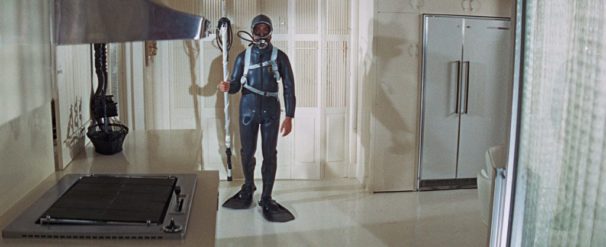
They could open, but they didn’t open, last Friday. Confusion reigns in the largest cinema market in the country, Los Angeles, which also happens to be a hotspot of COVID-19 infection. The MPAA website mentions nary a word about movie theater re-openings. Here are the California Department of Public Health guidelines:
- Limit attendees in the theater to 25% or 100, whichever is fewer.
- Implement a reservation system so moviegoers arrive at staggered times
- Patrons should wear face masks when not eating or drinking.
- Ushers should assist with social distancing and directing entry and exit traffic.
- Consider disposable or washable seat covers on porous surfaces that are difficult to clean.
- Reconfigure parking lots to limit congregation points and ensure proper spacing (closing every other space).
Now, this is very tough. In particular, the guideline that waives a facial mask while eating or drinking is problematic. (The guys who inevitably sit near me tend to inhale popcorn and slurp cola the entire movie.)
But … other than that … other than these draconian requirements, why did theaters not in fact open last Friday, as allowed? According to Deadline,
- Lack of marquee fare. “Tenet” has been tapped as one of the first major blockbuster films.
- Movie theaters need time to prep — i.e., restock concessions and bulk up on safety supplies like face masks, seat covers, anti-bacterial lotions and wipes.
- Many theaters have paused their leases with landlords.
- While a 30%-50% capacity auditorium level is doable financially for most theater owners, a 25% cap is stretching it for others.

That’s the conundrum of theaters. But for the movies themselves, many films can guide us through the themes of our current age. Take THE GRADUATE (1967). The visual symbols of “separation and suffocation” that were intentional design elements in this seminal ’60s movie apply to our COVID-19 return to theaters. In preparing for the film,
Production Designer Richard Sylbert and Director Mike Nichols held long conversations about how to capture what they considered the essence of Beverly Hills—its “flora and fauna trapped, as it were, behind all that expensive glass”. This is echoed when we view Benjamin through his aquarium (above), then walking around the house in his scuba diving mask and at the climax when he bangs on the plate-glass window in the church where Elaine is marrying his rival. All symbols of separation and suffocation.
Film & Furniture website
